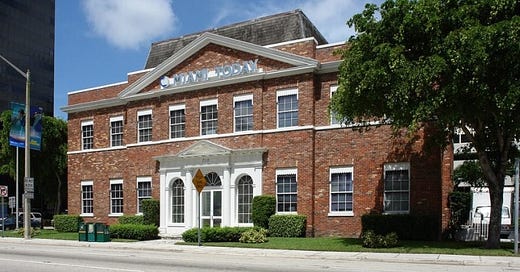WGBS Building on Brickell Avenue (1965-2013)
The story of the WGBS radio station studio and offices on Brickell Avenue from 1965 until 2013
When the Storer Broadcasting company selected the northwest corner of Brickell Avenue and SE Eighth Street to build a new studio for WGBS in 1964, there were seventeen radio stations vying for the loyalty of South Florida radio listeners. In addition to WIOD and WINZ, WGBS was one of the market leaders in Miami and surrounding area, transmitting what was considered a MOR genre, or middle of the road brand of harmonic vocals with light orchestral arrangements, a style later rebranded as soft adult contemporary.
It was WGBS’ popularity and growth that prompted Storer to construct a new office building and studio to support the changing technological needs of a contemporary radio station. The parent company encouraged WGBS to design and construct a colonial-styled brick building to provide a consistent look with the corporate office located on Bay Harbor Island. Once it opened in December of 1965, the WGBS building provided a unique departure from the rapidly disappearing residences of the past, and the new commercial glass towers that were constructed along Brickell Avenue during the decades that followed.
Keep reading with a 7-day free trial
Subscribe to Miami History to keep reading this post and get 7 days of free access to the full post archives.





